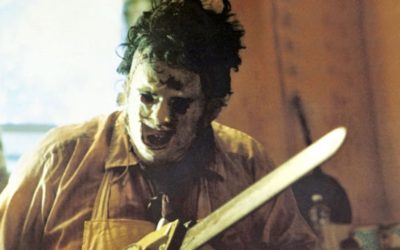
Southern Unsolved Mysteries
Jill Hand
The American South is known for spectacular scenery, mouth-watering cooking, and having given birth to music ranging from jazz to the Delta blues to rock and roll. It was also the scene of baffling mysteries which made front-page headlines and puzzled the entire nation. These are three of those mysteries, for which solutions were never found.
The Atlanta Ripper
Twenty-year-old Emma Lou Sharpe grew worried when her mother didn’t return from a trip to the grocery store on the evening of July 1, 1911. Lena Sharpe had said she’d only be gone for a few minutes, but over an hour had passed and she still wasn’t home. What was taking her so long?
Emma Lou put down her magazine and went to the front window of the home she shared with her mother on Hanover Street in Atlanta’s Old Fourth Ward. Drawing aside the curtain, she gazed anxiously down the street in the direction of the market. There was no sign of her mother. Maybe she met someone she knew and had stopped for a chat.
Or maybe…
Despite the sticky heat of the July night, Emma Lou’s skin turned cold.
Beginning in April 1909, a series of brutal slayings had thrown the residents of the close-knit eastside neighborhood into a panic. All the victims were Black or mixed-race women. Some had their heads bashed in, others had been shot. By February 1911, the killer was slashing throats.
As the death toll mounted, the newspapers gave him a name: ‘The Atlanta Ripper.’
Reporters made an inevitable comparison to the 1888 murders of Jack the Ripper. Jack preyed on women walking alone at night in London’s Whitechapel district, a densely populated area inhabited by an uneasy mixture of working poor, the unemployed, and career criminals. Jack had never been caught. The question on everyone’s mind was whether he could have crossed the Atlantic and resumed his bloody work in Atlanta.
In June 1911, two weeks before Lena Sharpe set out on her errand, one of her neighbors, a woman named Addie Watts, had been killed, her throat slashed open.
Emma Lou took one last look out the window before going to look for her mother.
Employees at the grocery store shook their heads and told Emma Lou that Lena hadn’t been there that night. Dejected, not knowing where else she might have gone, the young woman started walking home. That’s when a man approached her. Emma Lou later described him as tall and broad-shouldered, dark-skinned, wearing a black suit and a wide-brimmed black hat.
Emma Lou was certain she’d never seen him before. When he smiled and asked how she was feeling, something about the way he said it made her uneasy. She was warily edging away when the stranger said, “Don’t worry, I never hurt girls like you.”
Then he stabbed her in the back.
In the confusion, as Emma Lou’s screams brought people running to see what the commotion was about, the man slipped away. Emma Lou survived, but her mother wasn’t so fortunate. Her lifeless body was discovered with its throat savagely slashed. The Atlanta Ripper had struck again.
By the time his murder spree ended in 1912, the Atlanta Ripper was thought to have claimed the lives of at least 20 women, four times as many as his London counterpart. Several suspects were brought in for questioning, but no charges were brought against any of them. Just like Jack the Ripper, the Atlanta Ripper’s identity remains a mystery.
The Blood House of Fountain Drive
It was close to midnight on Sept. 8, 1987 when Minnie Winston stepped out of the shower in her home on Fountain Drive in southwest Atlanta. It had been a long day and Minnie, 77, was ready to turn in and get some sleep. Caring for her 79-year-old husband William, who was in poor health and spent much of his time in bed, hooked up to a dialysis machine, was exhausting.
As Minnie reached for a towel, she noticed bright red splotches on the floor. Some were the size of a dime, while others were larger, about the circumference of a poker chip. Minnie stared in disbelief as more of the red substance oozed up from between the floor tiles. Puzzled, she went into the bedroom and woke William.
“Come look at all this red stuff coming out of the floor,” she said.
The red stuff wasn’t confined to the bathroom. To the couple’s consternation, it was all over the small rented house, where they had lived for 22 years. The were red spots on the floors and dripping down the walls. They were in every room and even in the basement. Thoroughly frightened, the Winstons called 911.
The police didn’t know what to make of it. The Winstons lived quietly. Minnie had been a school teacher and William was retired from a company which produced and distributed movie posters. Their children had grown up and moved out. They had no pets. There was no sign of rodent infestation, neither upstairs nor in the basement. Despite a thorough search of the premises, the police found nothing to account for the red stuff.
It was sticky and looked and smelled like blood, but that seemed ridiculous. What would an elderly couple be doing with a house full of bloodstains? It had to be something else.
To everyone’s surprise, lab tests determined it was blood, specifically type O. That only raised more questions. Where did it come from? The Winstons both had type A blood. William’s dialysis machine was checked out and found to be functioning properly. It seemed unlikely that he and Minnie had acquired a supply of blood somewhere with the intent of staging a hoax. Hoaxers usually crave attention, but the Winstons were adamant that they just wanted to be left alone.
For a few weeks, the house was besieged by the media and by self-proclaimed paranormal investigators and crowds of the curious, hoping for a little excitement. Minnie and William stubbornly refused all pleas to be allowed to come inside and look around. Eventually, when nothing else happened, the crowds melted away. To this day, there has been no explanation for why, late one autumn night, a house oozed blood.
Two Little Boys Who Disappeared Under Eerily Similar Circumstances—45 Years Apart
A family camping trip. A chance for the adults to relax by the water, contentedly enjoying the sights and sounds of the outdoors while taking a break from their normal routine. A large group of excited children, shouting and playing and having the time of their lives.
It was a leisurely sun-filled scene familiar to thousands of American families, but this time the laid-back afternoon came to a sudden and terrifying halt when an adult in the group counted heads and realized one of the children—a four-year-old boy–was missing.
With mounting panic, they searched the shoreline, but the boy had vanished as suddenly and completely as if the earth had opened beneath his feet and swallowed him.
The desperate search expanded, involving police and bloodhounds and civilian volunteers. Posters with the child’s photograph were distributed, offering a reward for information leading to his return. Alligators were hunted down and shot, their bellies sliced open in case the boy had been seized and eaten. Despite all those efforts, there was no sign of him, no trace of his remains, nothing to indicate what happened to him.
In the first case, in 1912, the parents of little Bobby Dunbar from Opelousas, Louisiana were reunited with a child whom they claimed was their missing son. Eight months had passed since Bobby’s disappearance when a boy who resembled him was discovered traveling with an itinerant handyman. A joyous reunion followed. Despite the handyman insisting the boy was his brother’s child, little “Bobby” was absorbed into the Dunbar family.
Many decades later, DNA testing proved the handyman was right all along. The results showed that the man who grew up and died believing he was Bobby Dunbar was not related to the Dunbar family. He was the child of the handyman’s brother and his girlfriend.
To this day, no one knows what became of the real Bobby Dunbar.
That is strange enough, but even stranger is the fact that the details of the boy’s disappearance repeated themselves almost exactly, forty-five years later.
Four-year-old Danny Barter disappeared one sunny day in June 1959 while on a camping trip with his parents and six siblings to Perdido Bay, on Alabama’s Gulf shore. Danny was playing happily one minute and gone the next, vanishing while surrounded by his family.
Divers went into the water, in case he had wandered in and drowned. Alligators were killed and cut open in search of his remains. Bloodhounds were used to track his scent. Missing person posters were distributed. But despite all those efforts, Danny Barter, just like Bobby Dunbar, vanished without a trace. His fate is still unknown.
About the Author
Jill Hand is the author of the Trapnell thriller series about the madcap adventures of the bickering Trapnell siblings.

More True Crime Features
Real Life Monsters
The Appeal of True Crime: When Real Life Becomes a Monster Story
The Villains of True Crime
The Predators of True Crime Think Differently
Murder Muses
The Dark Influence of True Crime on Modern Fiction



